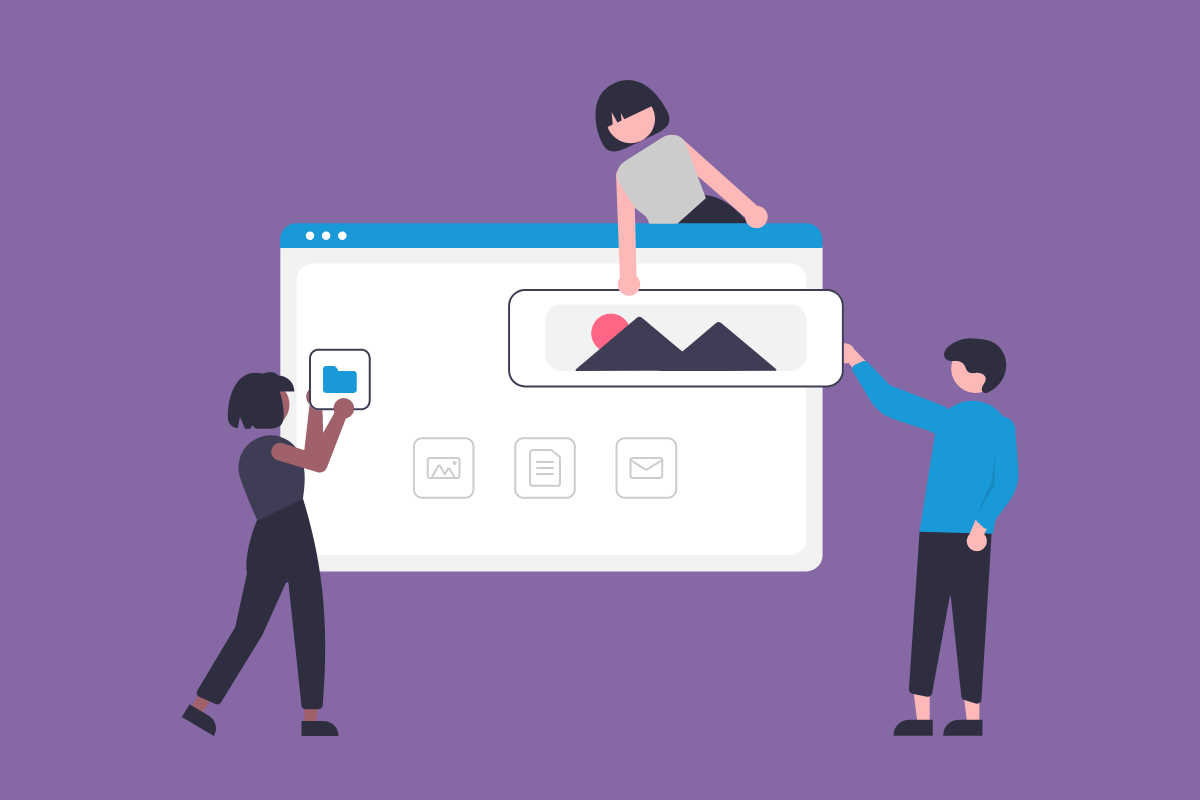As we move into 2023, there are several new and emerging technologies in the world of mobile app development that are worth considering. These technologies have the potential to revolutionise the way we create and use apps, making them more powerful, efficient, and user-friendly. Here are some of the top mobile app technologies to consider in 2023:
Artificial Intelligence and Machine Learning (AI and ML)
AI and ML are related but distinct fields of study and technology. AI refers to the development of computer systems that can perform tasks that typically require human intelligence, such as recognising patterns, learning from data, and making decisions. ML, on the other hand, is a subset of AI that involves the development of algorithms and mathematical models that can be used to make predictions or take actions based on data.
In other words, ML is a way of implementing AI. It involves using large datasets and computational power to “train” a machine learning model to recognise patterns and make decisions based on those patterns. This can allow the model to make predictions or take actions based on new data, without the need for explicit programming.
Together, AI and ML are powerful tools that are being used in a wide range of applications. These technologies have the potential to revolutionise many aspects of our lives, from how we work and communicate to how we live and learn.
AI and ML can benefit businesses in a number of ways. Some of the potential benefits of using these technologies include:
- Improved efficiency and productivity: AI and ML can automate routine tasks and processes, freeing up employees to focus on more complex and value-added work. This can lead to improved productivity and efficiency within the organisation.
- Enhanced decision-making: AI and ML can provide businesses with access to large amounts of data and the ability to analyse that data quickly and accurately. This can help to improve decision-making by providing insights and predictions that would not be possible with human analysis alone.
- Improved customer experiences: AI and ML can be used to personalise and enhance the customer experience, for example by providing personalised product or service recommendations, or by automating customer service processes. This can help to improve customer satisfaction and loyalty.
- Increased competitiveness: By adopting AI and ML technologies, businesses can gain a competitive advantage over their rivals by being able to innovate and respond to market changes more quickly and effectively.
There are many mobile apps that use AI and ML to provide various features and services. Here are a few examples:
- Language translation apps: These use AI and ML to translate text or spoken words in real-time, allowing users to communicate with people in different languages.
- Personal assistants: Apps like Siri, Google Assistant, and Alexa use AI and ML to understand and respond to voice commands and queries. They can perform tasks such as setting reminders, making phone calls, and answering questions.
- Image recognition apps: These use AI and ML to analyse and identify objects in photos and videos. They can be used for tasks like tagging people in photos or identifying plant and animal species.
- Recommender systems: Many apps, such as music and video streaming apps, use AI and ML to recommend content based on a user’s past preferences.
- Fraud detection: Financial institutions and online retailers use AI and ML to analyse patterns in data and identify potentially fraudulent transactions.
These are just a few examples of the many ways that AI and ML can be used in mobile apps.
Internet of Things (IoT)
The Internet of Things refers to the connection of devices (such as sensors and actuators) to the internet, allowing them to send and receive data. This allows for the automation and remote control of these devices, enabling them to be more integrated into our daily lives and work.
There are several potential benefits that businesses can gain from the use of IoT. Some of these include:
- Improved efficiency and productivity: By automating processes and gathering data from connected devices, businesses can gain insights into their operations and identify areas for improvement. This can help to increase efficiency and productivity, leading to cost savings and increased profitability.
- Enhanced customer experience: The IoT can be used to improve the customer experience by providing personalised services and real-time support. For example, a retail store could use IoT devices to track customer behaviour and offer personalised recommendations based on their previous purchases.
- Better decision making: The vast amounts of data generated by IoT devices can be used to inform business decisions. This data can be analysed to identify trends and patterns, allowing businesses to make more informed decisions about their operations and strategies.
- Increased competitiveness: The IoT allows businesses to differentiate themselves from competitors by offering innovative products and services that take advantage of connected devices and automation. This can help businesses to stay ahead of the curve and maintain a competitive edge in the marketplace.
Here are a few examples of IoT mobile apps:
- Smart home apps: These allow users to control and monitor their smart home devices, such as lights, thermostats, and security systems, from their smartphones.
- Wearable fitness apps: These apps track the user’s physical activity and health data and provide personalized recommendations for improving fitness and wellness.
- Industrial IoT apps: These apps can be used to monitor and control industrial equipment, such as machinery and vehicles, remotely.
- Transportation apps: These apps can be used to track and optimize routes for fleet management, track vehicle maintenance and performance, and reduce fuel consumption.
Augmented and Virtual Reality (AR and VR)
AR and VR are technologies that are used to enhance or create immersive digital experiences.
AR involves superimposing digital information or images onto the real world, allowing users to see a blended view of the physical and digital worlds. This technology is often used in mobile apps and games, as well as in industrial and military applications.
VR, on the other hand, involves creating a fully immersive digital environment that users can interact with. This is typically achieved using a VR headset, which blocks out the physical world and creates a computer-generated world in its place. VR is commonly used in gaming, but it also has applications in other fields such as healthcare, education, and entertainment.
Both AR and VR have the potential to transform a wide range of industries and applications, from gaming and entertainment to healthcare and education. By providing more immersive and interactive experiences, these technologies can enhance communication, collaboration, and learning.
There are several potential benefits that businesses can gain from the use AR and VR technologies. Some of these benefits include:
- Improved customer engagement: AR and VR technologies can be used to create more engaging and immersive customer experiences. This can help businesses to differentiate themselves from competitors and improve customer loyalty.
- Enhanced training and education: VR can be used to create realistic and interactive training environments, allowing employees to learn new skills and knowledge in a safe and controlled setting.
- Increased efficiency and productivity: AR and VR technologies can be used to streamline and automate business processes, allowing employees to work more efficiently and effectively. For example, AR can be used to provide real-time instructions and guidance to workers on a factory floor, reducing the need for manual tasks and errors.
- Better decision making: The data generated by AR and VR technologies can be used to inform business decisions. For example, VR can be used to simulate and test different scenarios, allowing businesses to assess the potential outcomes of different actions before making a decision.
There are many mobile apps that use AR and VR technology to provide various experiences, such as:
- Gaming: There are many mobile games that use AR and VR to provide a more immersive gaming experience.
- Education and training: AR and VR can be used to create interactive and engaging learning experiences, such as simulations and virtual field trips.
- Entertainment: Apps that use AR and VR can provide a more immersive movie and music experience, such as concerts or film trailers.
- Retail: AR and VR can be used to create virtual storefronts and showrooms, allowing customers to browse and interact with products in a virtual environment.
- Real estate: AR and VR can be used to create virtual tours of properties, allowing potential buyers to explore a property from the comfort of their own home.
Again, this emphasis the possibilities of mobile app technologies in 2023.
5G
5G is the fifth generation of cellular network technology, offering faster speeds, lower latency, and greater capacity than previous generations.
Some of the key benefits of 5G for mobile apps include:
- Increased speed: 5G offers significantly faster data speeds than previous generations of mobile technology, which can enable faster loading times and more seamless experiences for users.
- Lower latency: 5G has lower latency than previous generations, which means that there is less delay in the transmission of data. This can make it possible to use real-time applications and services more effectively.
- Greater capacity: 5G networks have a larger capacity than previous generations, which means that they can support more users and devices simultaneously without experiencing congestion.
- Improved reliability: 5G networks are more reliable than previous generations, which means that they are less likely to experience dropped connections or other disruptions.
- Enhanced connectivity: 5G technology can provide enhanced connectivity in areas where previous generations have struggled, such as in rural or remote areas.
Conclusion
Overall, these are just a few of the many exciting mobile app technologies to watch out for in 2023. As these technologies continue to evolve and improve, they will no doubt have a major impact on the way we create and use mobile apps. All of these technologies discussed are able to improve efficiency and productivity of work and so is something all businesses should consider.
As highlighted there are many reasons to consider mobile app technologies in 2023. Moreover, the growth of mobile users is undeniable. In total, the number of people that own a smart phone is 7.26 Billion, making up 91.00% of the world’s population. Moreover, the average person spends 3 hours and 15 minutes on their phone each day. And 1 in 5 smartphone users spends upwards of 4.5 hours on average on their phones every day. This demonstrates the obvious reasons why businesses should consider how mobile technology could benefit their business operations. Read more about ‘Why You Should Develop an App.’
Learn more about the digital transformation solutions provided at Pulsion. Our team has extensive experience in mobile app development which ensures we are perfectly placed to understand your project and offer the most appropriate solution. Partnerships with Amazon Web Services and Microsoft ensures we are able to offer the best technology solution for your needs.







